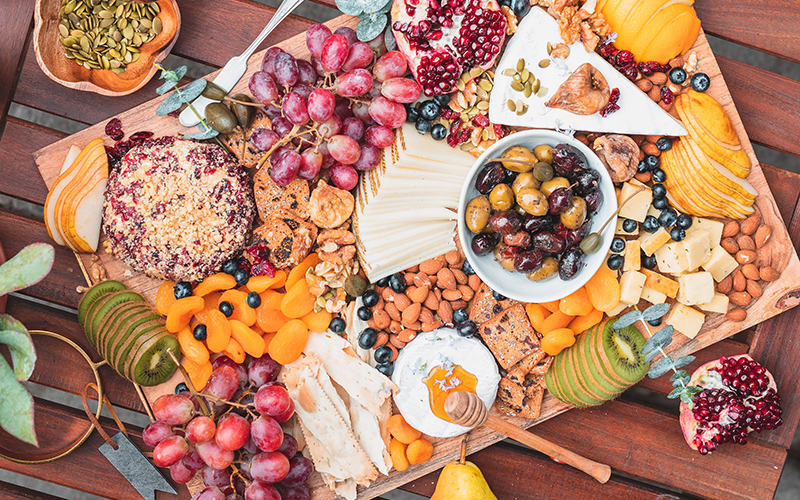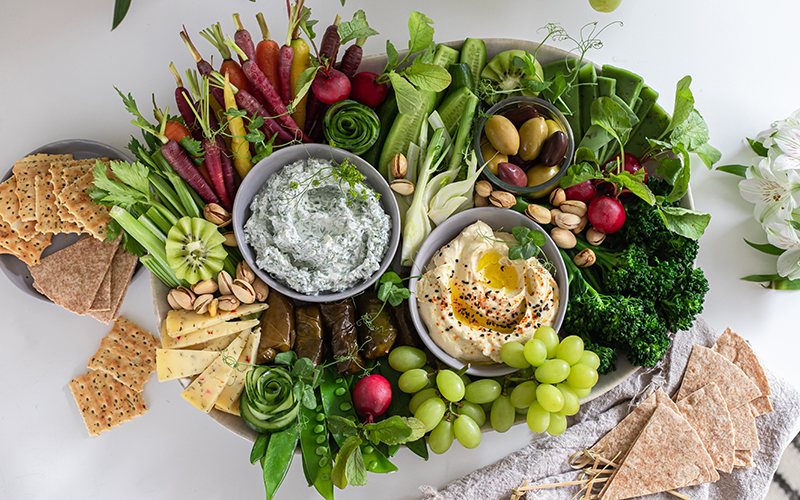
Charcuterie boards are definitely trending—and for good reason. These fun and easy platters offer infinite opportunities for flavor, texture and visual appeal. Just select your plate, board, or platter and start building! Here are some ideas to help keep your creation on the healthy side.
Fill it up with fruit
With so many types of fruit to choose from, it can be hard to pick just a few. Seasonal fruit offers a sweet way to add color and texture. Consider grapes, pears, and apples when temperatures are cooler and berries, cherries, apricots, peaches, and melons in warmer months.
Dried fruits like cranberries, figs, and raisins can provide texture, but know that they may have added sugars.
Tip: Want to keep cut fruit, like apples, pears and peaches, from browning? Before plating, mix the cut fruit in a blend of 2 tablespoons of honey to 1 cup of water, then drain.
Bring on the veggies
As with fruit, your vegetable options are nearly endless. Fresh crudités like carrots, bell peppers, pink radishes, and celery are classic choices, along with snap peas, green beans and cucumber.
For an added twist, stack lettuce leaves on your platter for making wraps. Romaine, butterhead, and leaf lettuce offer a sturdy structure and healthy doses of vitamins and minerals.
Pick your proteins
If meat is a must, look for unprocessed and low-fat items. For healthier fare, limit deli meat and include more of these options:
- Sliced leftover chicken or turkey breast
- Hard-boiled eggs
- Roasted chickpeas
- Nuts, such as almonds, pecans and walnuts
- Grilled shrimp
Choose your cheese
True: Cheese is often high in unhealthy saturated fat and sodium. Also true: It provides plenty of protein, calcium, vitamins and other nutrients. For most people, moderation is the key.
To bring balance to your board, offset a saltier favorite like Brie with a lower sodium option such as Swiss—and offer more of the latter. Read nutrition labels, and look for low-calorie, reduced-fat, or fat-free versions of cheese.
Firmer cheeses like Swiss, cheddar, and mozzarella are naturally low in lactose. But if you want to avoid dairy entirely, you can find dairy-free cheese, too.
Go-to grains
Whole grains are linked to a host of health benefits, such as lowering risk for heart disease, helping manage weight, and supporting healthy digestion. So whether you prefer baguettes, bagel chips, crackers, or pita wedges, aim to make half of the grains you eat whole-grain.
If you’re following a gluten-free diet, be sure to check labels and look for alternative grains, like buckwheat, flax or quinoa.


